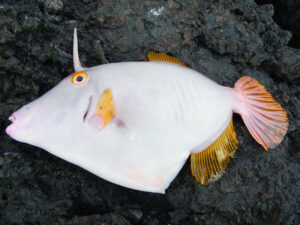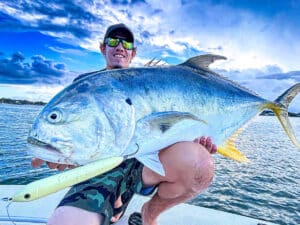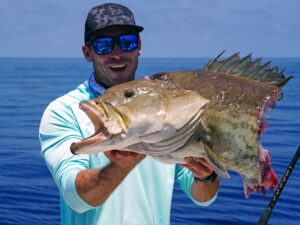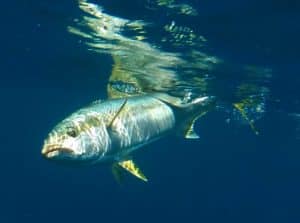Fat Cats
QUESTION:
Why don’t saltwater catfish get very big? Or do they? Recently I was tossing a rig to catch bait in the surf at Playa Asseradores, Nicaragua, fishing for whatever might be lurking, when I hooked and landed a catfish about a foot long. I have caught saltwater catfish a few different times but never anything of significant size, and I’ve never seen or heard of any that get very big; yet, some of our largest freshwater fish are catfish. All of the conditions that allow freshwater catfish to get large are present in the ocean; it would stand to reason that there should be large saltwater catfish. Can you enlighten me?
Peter Corselli
Gardnerville, Nevada
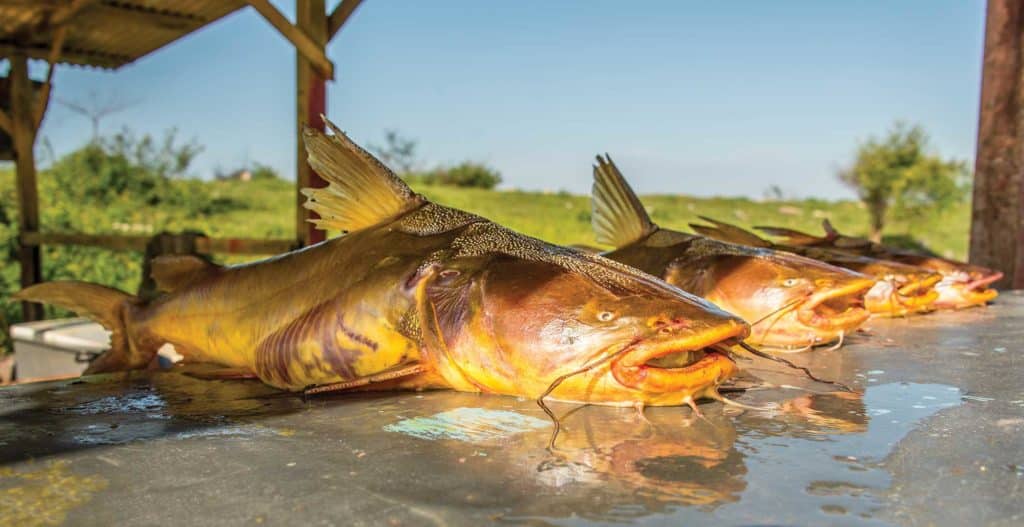
ANSWER:
That’s a great question Peter, and one I admit I hadn’t thought about myself. Certainly all of the largest catfishes are found exclusively in freshwater, including the world’s largest freshwater fish, the Mekong giant catfish (Pangasianodon gigas) of Southeast Asia, which can exceed 700 pounds and grows to more than 10 feet long. Another freshwater heavyweight is the wels catfish (Silurus -glanis) of Europe, which commonly exceeds 10 feet long and 300 pounds—and historically was reputed to grow to 15 feet long and more than 660 pounds. The world-record piraiba (lau-lau, Brachyplatystomata filamentosum) of South America is 341 pounds, but it undoubtedly grows larger.
In contrast, the largest saltwater catfish (all of which frequent estuaries and areas near river mouths in tropical regions) reaches about 6½ feet long and 110 pounds in the case of the gillbacker sea catfish (Sciades parkeri), which is encountered in and around the estuarine mouth of the Amazon River. Other “king-catfish contenders” in the salt include the giant sea catfish (Arius gigas), which frequents estuaries in central western Africa, where it grows to nearly 6 feet long and 110 pounds, while in Southeast Asia and northern Australia, the most likely candidate is the giant catfish (Netuma thalassina), which exceeds 6 feet and approaches 100 pounds.
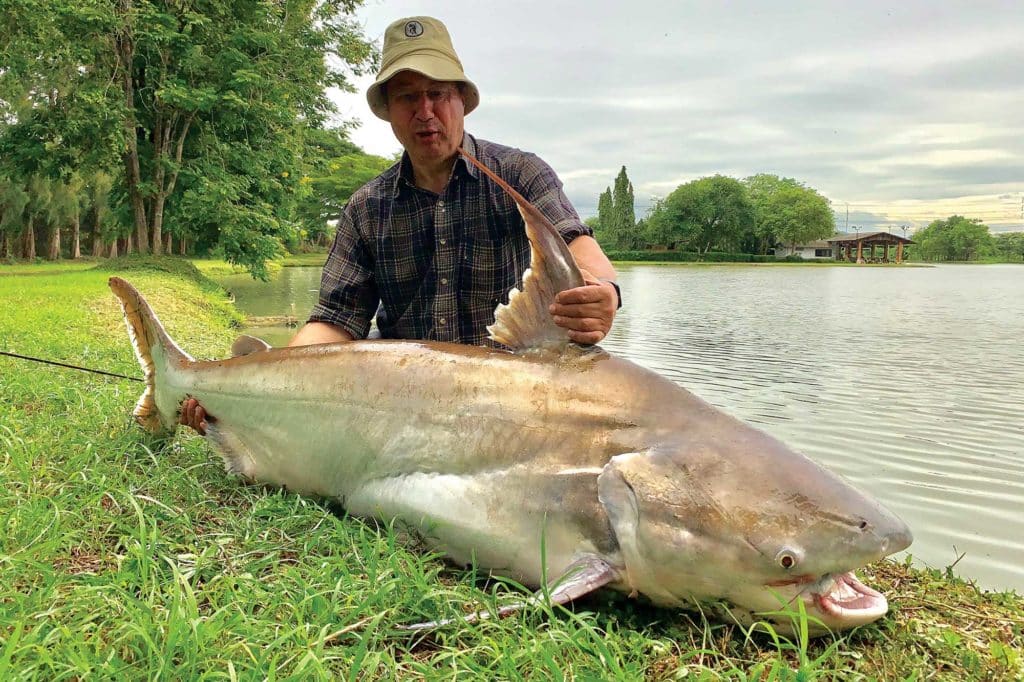
As for the reason why saltwater catfish don’t get really big, it’s certainly not because of a lack of food availability or the usual other reasons. I can only think it’s a throwback to the evolutionary emergence of catfishes from fresh-water environments. Because of this, over 98 percent of catfish species around today (and there are more than 3,000 of them) are restricted to fresh water. So the evolutionary odds simply tip the balance toward the biggest catfish living in fresh water, rather than for any specific biological reason.
—Ben Diggles
From the Tile File
QUESTION:
While deep-dropping in 700 feet of water off Abaco, Bahamas, with the Hooker Electric team, we caught this little guy. At first we thought it was a juvenile golden tilefish, but the coloration seems slightly different from a golden tile. I can’t seem to find it in any species identification guides. What the heck is it?
Adrian Gray
Sebastian, Florida
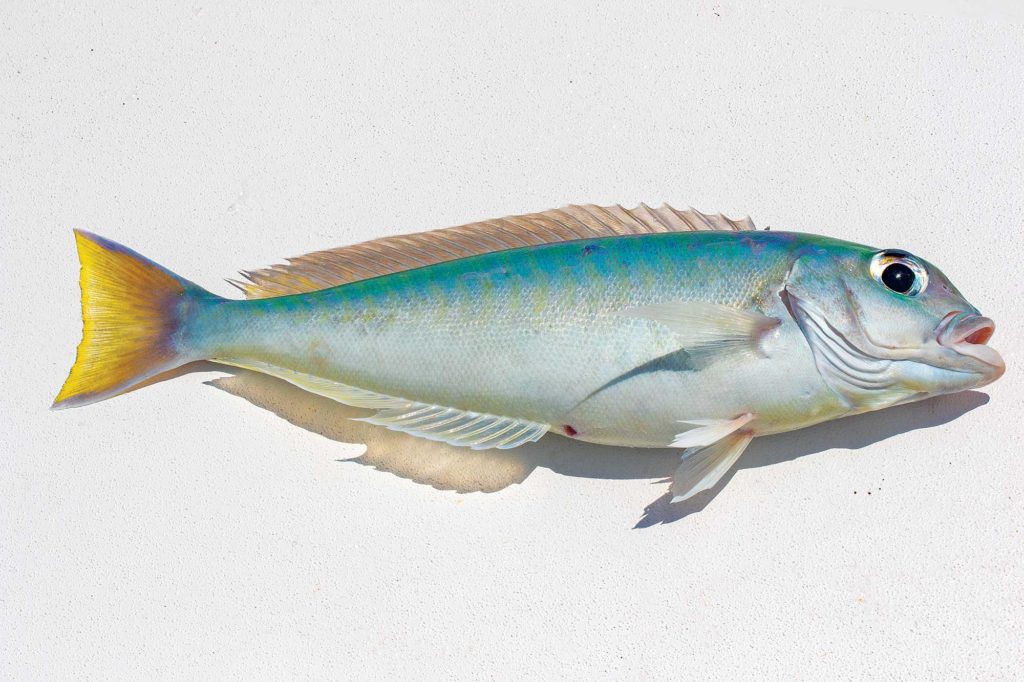
ANSWER:
Uncovering this fish’s identification took a bit of digging, Adrian, because there aren’t many descriptions or color photos available. It’s a bankslope tilefish, Caulolatilus dooleyi. This species was first described from the Bahamas—its only known location—in 1978. This seldom-encountered species is known to live at depths between approximately 720 and 840 feet. Few specimens have been collected; a reference from 2002 lists only three, of which the largest was just over a foot in length. Because of its rarity and relatively recent discovery, little is known of this species’ biology and, as one would expect, there is no commercial fishery for this tilefish.
—Ray Waldner
Cracking the Creole Code
QUESTION:
I caught this fish about 40 miles southwest of Destin, Florida, in 170 feet of water. It looks similar to a vermillion snapper but was a darker red and had yellow on its dorsal fin. Can you help me identify this fish?
Jeremy Burke
Destin, Florida
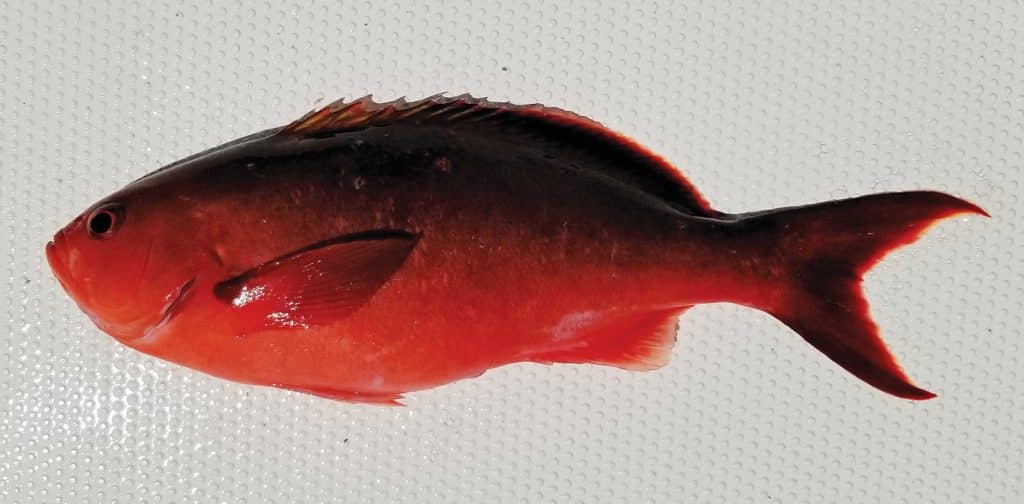
ANSWER:
Jeremy, that striking fish you caught is a creole fish, Paranthias furcifer. This deepwater member of the grouper family, Serranidae, tops off at about a foot. It’s one of the few reef fishes found on both sides of the Atlantic, around temperate and tropical reefs and other hard-bottom habitats. Because it’s rarely caught, not a great deal is known of its life history. Generally plankton feeders, creole fish tend to stay in schools hovering just off the bottom.
Because creole fish are in the grouper family, they are thought to be hermaphroditic, starting as female then converting to male. But this can’t be firmly established until specimens in transition have been found. Perhaps the species’ most noteworthy feature is its brilliant body color. Though hard to see in your photo, there are three white spots scattered under the middle to rear portion of the dorsal fin and a bright orangish-red base of the pectoral fin. Interestingly, those white spots have the ability to go dark, probably when the fish is frightened. These pigment traits are diagnostic of the species. Surprisingly, the grouper family has scores of small species with unusually bright coloration. But many are pan-size, living in relatively deep habitats, and rarely seen. The species is included in the IGFA’s record system; the all-tackle-record creole fish weighed 1 pound, 8 ounces, taken off Apalachicola, Florida, in 2006.
—Bob Shipp
Sport Fishing’s Prestigious International Panel of Experts
Northeast: Mike Fahay, Sandy Hook Marine Lab, New Jersey
Southeast: Ray Waldner, Ph.D., Palm Beach Atlantic University, Florida
Gulf of Mexico: Bob Shipp, Ph.D., University of South Alabama
West Coast: Milton Love, Ph.D., UCSB, California
Far Pacific: Ben Diggles, Ph.D., Queensland, Australia
Bluewater Pelagics: John Graves, Ph.D., Virginia Institute of Marine Science
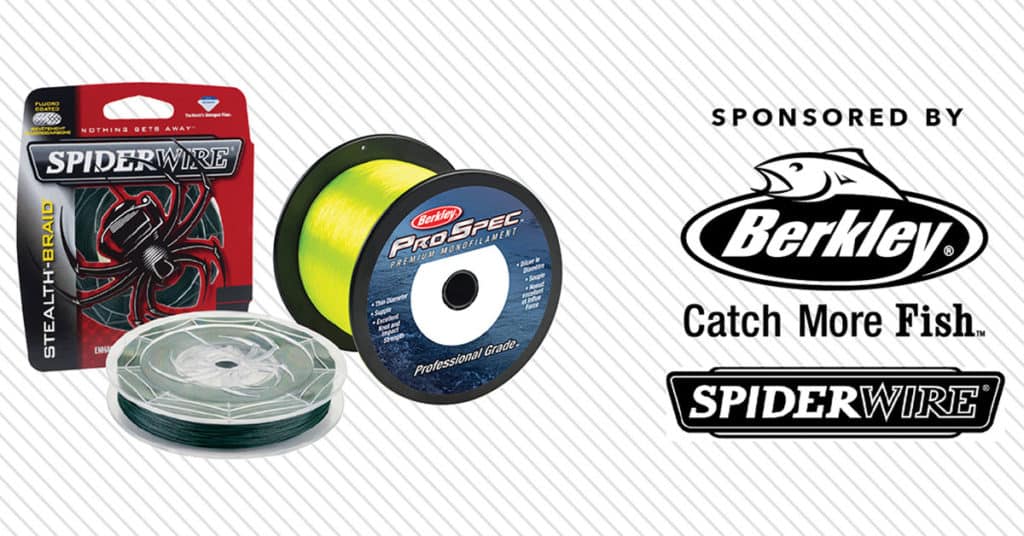
CHALLENGE OUR EXPERTS (And Win Up to 10,800 Yards of Line!)
Send in your question and any relevant photos of your mysterious catch or observation for our experts’ ID and feedback. If we publish your question and you have a shipping address within the United States or Canada, you’ll win a 3‑pound spool of Berkley Pro Spec ocean-blue or fluorescent-yellow monofilament (1,000 to 10,800 yards, depending on line strength) or a 1,500‑yard spool of Spiderwire Stealth braid up to 100‑pound‑test! Send questions and images via email to fishfacts@sportfishing.com (include your hometown) or via post to Sport Fishing Fish Facts, 460 N. Orlando Ave., Suite 200, Winter Park, FL 32789.

